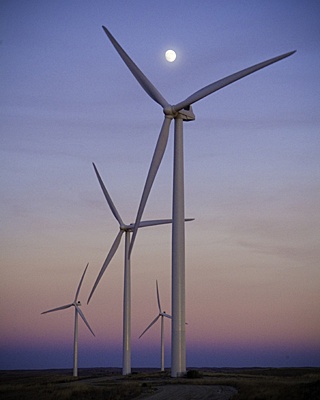We have much more to do and your continued support is needed now more than ever.
Nebraska Groups Offer Utilities Road Map to Cleaner Energy Future
Nebraska is unique among the U.S. states: It’s the only one that serves its electric customers entirely through public power entities. While this system of 100 percent public power has been largely successful keeping consumer rates low through the years, Nebraska’s utilities have been slow to embrace energy efficiency programs as a way to meet energy needs.
Because managing demand is generally far cheaper and more eco-friendly that building new fossil-fueled power plants and drilling new gas wells, Nebraska Wildlife Federation (NEWF), a National Wildlife Federation affiliate, launched an effort two years ago to press Nebraska’s major utilities to invest in energy efficiency programs.
Nebraska Affiliate Champions “Conservation Power Plant”

“The effort soon grew well beyond our original expectations,” says Duane Hovorka, NEWF executive director. When Nebraska Public Power District, the state’s largest utility, announced plans in fall 2011 to invest $1.5 billion in upgrading old coal-fired plants to meet new U.S. Environmental Protection Agency (EPA) regulations, the coalition that NEWF had brought together was poised to take action. “We jointly obtained a foundation grant that allowed us to quickly ramp up our efforts,” says Hovorka. And the groups successfully convinced the utility to conduct an analysis of energy-generation options before making any decisions to retrofit aging plants. The motivation behind the “stall” tactic? That the Nebraska Public Power District might find alternative, cost-effective ways to deliver power and meet EPA’s pollution-control standards.
“Individual Nebraskans have long been convinced that clean energy is the way to go,” says John Atkeison, energy policy director at NEWF. “Poll after poll, survey after focus group continue to show that, by very large majorities, Nebraskans think the public power utilities they own should be moving faster and further to embrace wind, solar, energy efficiency and other clean energy solutions.”
Reducing risk to rising fuel prices may be one compelling reason to consider diversification of fuel sources. Since 2002, for instance, the cost of coal transported to Nebraska utilities—two-thirds of which are currently powered by the fossil fuel—has increased each year by an average of more than 11 percent, according to the U.S. Department of Energy. In contrast, the price for new wind power is lower today than it was a decade ago, and solar photovoltaic energy also continues to fall in price (see NEWF’s Harness the Sun report). The National Renewable Energy Laboratory says Nebraska wind energy and solar resources rank #4 and #9 in the nation, respectively—yet these resources are mostly untapped in the Cornhusker State today, accounting for less than 4 percent of electricity generated in 2012.
Cost for Cleaner Energy Is Competitive
In June, after a year and a half of analyzing data, Nebraska Public Power District approved its 2013 Integrated Resource Plan, a tool that its board and management team will use to guide decisions regarding future generation resources. In it, the utility identified a couple dozen scenarios that would provide reliable, affordable electricity for customers. The district then used projections for current and future costs for the different energy sources to estimate the needed investment associated with each scenario.

While it’s not known at this time what energy path Nebraska Public Power District or other utilities will choose, NEWF and its partners continue to advocate for actions that substantially reduce greenhouse gas emissions, limit impacts on wildlife, improve human health and stimulate job growth and investment in Nebraska. A Clean Energy Omaha plan was drafted for consideration by the Omaha Public Power District, and proposals for ways Lincoln Electric System might grow its clean energy investments are being developed. The Lincoln utility has already adopted a policy that it would meet all projected electric load growth over the next five years through a combination of energy efficiency and renewable energy—“a huge change,” says Atkeison. Tabling at events such as rallies, energy tours and baseball games has helped NEWF bring its message to citizens who are supportive of the cause.
“Human beings can be the solution. And we have to be the solution,” Atkeison says. “It’s up to us. We can do it with current technology.”
Find out more about the Clean Energy Nebraska campaign.
This post was written by Lew Carpenter, regional representative, and Kelly Senser, manager of affiliate partnerships.
Take Action in Your Home
Learn how to save energy by giving your home an energy audit.





















